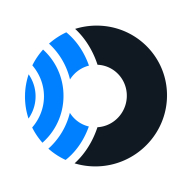

![Threat Stack Cloud Security Platform [EOL] Logo](https://images.peerspot.com/image/upload/c_scale,dpr_3.0,f_auto,q_100,w_64/o0no0it6ybl6satjcxomcblsgmd6.png)
Threat Stack Cloud Security Platform [EOL] and Orca Security are competing in the cloud security solutions category. Orca Security provides a more comprehensive feature set and seamless integration, making it often a better choice despite higher costs.
Features: Threat Stack Cloud Security Platform [EOL] is recognized for its real-time threat detection, compliance monitoring, and integration with Docker and AWS environments. Orca Security stands out with its continuous security assessment, automated risk prioritization, and cloud-native protection capabilities.
Room for Improvement: Threat Stack Cloud Security Platform [EOL] could benefit from streamlining its deployment process and improving user interface navigation. Orca Security may enhance usability by providing more detailed alert customization options and further refining its onboarding procedures.
Ease of Deployment and Customer Service: Orca Security offers agentless deployment, simplifying integration within cloud environments, and provides responsive support and comprehensive documentation. Threat Stack Cloud Security Platform [EOL], by contrast, requires agent installation, which can complicate setup, though it also offers strong support for users.
Pricing and ROI: Pricing for Threat Stack Cloud Security Platform [EOL] may be lower initially, appealing to budget-conscious buyers, while Orca Security's advanced features often yield a higher long-term ROI, justifying its greater upfront cost.


| Company Size | Count |
|---|---|
| Small Business | 44 |
| Midsize Enterprise | 21 |
| Large Enterprise | 53 |
| Company Size | Count |
|---|---|
| Small Business | 9 |
| Midsize Enterprise | 7 |
| Large Enterprise | 5 |
| Company Size | Count |
|---|---|
| Small Business | 2 |
| Midsize Enterprise | 5 |
| Large Enterprise | 2 |
SentinelOne Singularity Cloud Security offers a streamlined approach to cloud security with intuitive operation and strong integration capabilities for heightened threat detection and remediation efficiency.
Singularity Cloud Security stands out for its real-time detection and response, effectively minimizing detection and remediation timelines. Its automated remediation integrates smoothly with third-party tools enhancing operational efficiency. The comprehensive console ensures visibility and support for forensic investigations. Seamless platform integration and robust support for innovation are notable advantages. Areas for development include improved search functionality, affordability, better firewall capabilities for remote users, stable agents, comprehensive reporting, and efficient third-party integrations. Clarity in the interface, responsive support, and real-time alerting need enhancement, with a call for more automation and customization. Better scalability and cost-effective integration without compromising capabilities are desired.
What are SentinelOne Singularity Cloud Security's standout features?SentinelOne Singularity Cloud Security is deployed in industries needing robust cloud security posture management, endpoint protection, and threat hunting. Utilized frequently across AWS and Azure, it assists in monitoring, threat detection, and maintaining compliance in diverse environments while providing real-time alerts and recommendations for proactive threat management.
At Orca Security, we’re on a mission to make it fast, easy, and cost effective for organizations to address critical cloud security issues so they can operate in the cloud with confidence.
Key Platform Features:
Agentless: Complete, centralized coverage of the entire cloud estate, without the need for installing and configuring agents or layering together multiple siloed tools. Full visibility of cloud misconfigurations, vulnerabilities, workload protection, malware scanning, image scanning, file integrity monitoring and more.
Asset Inventory: Get a complete inventory of all your public cloud assets, including detailed information on installed OSes, software, and applications, as well as data and network assets such as storage buckets, Virtual Private Clouds (VPCs), and Security Groups.
Attack Path Analysis: Visualize attack vectors to critical assets or crown jewels. See which assets are susceptible to lateral movement, assume roles, privilege escalation, and more.
Risk Prioritization: Prioritize the 1% of risks that matter the most, based on impact scores. Secure the vulnerabilities and misconfigured targets (critical assets) and eliminate the potential risks residing on the attack paths to those targets.
Cloud Threat Detection: Monitor for malicious activity within your entire cloud estate. Be aware of detected threats, user behavior anomalies and more.
Breach Forensics: Log every change and all activity into a central repository for investigation procedures to confirm or deny entry and compromises within the cloud estate.
Cloud To Dev (Shift Left): Orca’s built-in shift left capabilities enables DevOps to focus more security attention earlier in the CI/CD pipelines. Security teams are able to trace a production risk (misconfiguration or vulnerability) directly to the original source code repository from which it came, even down to the exact line of code that is at the root of the identified risk.
Compliance: Choose from over 60 preconfigured compliance frameworks, cloud security best practices, CIS Benchmarks, or design and build your own compliance framework for fast and continuous reporting.
Security Score: The Orca Security Score is found on Orca’s Risk Dashboard and is updated daily. The overall score is calculated based on performance in the following five categories - Suspicious Activity, IAM, Data at Risk, Vulnerable Assets, and Responsiveness. Since the scores are percentage based and not raw numbers, you can objectively make comparisons to other organizations within your industry or business units of different sizes. In addition to reporting to senior management, the Orca Security Score can help with internal self-monitoring, as a way of measuring risk mitigation efforts, to know where to focus efforts, and track progress.
Orca Security Benefits
Consolidate technologies to reduce costs and complexity:
“The more I can get out of this one solution, the better. I see Orca as the tool where we get all cloud-related security data.” - Joshua Scott, Head of Security and IT | Postman
Avoid costly breaches:
"I look at proactive asset discovery, configuration management, and vulnerability management as being able to find a vulnerability before the bad guys do and being able to deal with it before something exploits it. This is what Orca does for us." - Doug Graham, CSO & CPO | Lionbridge
Increase team productivity and efficiency by focusing on high-value activities and solving the 1% of risks that matter most:
"Orca is unique in that it locates vulnerabilities with precision and delivers tangible, actionable results – without having to sift through all the noise." - Aaron Brown, Senior Cloud Security Engineer | Sisense
Quick Time-to-Value with Immediate ROI:
"Orca told us we could have some visibility within 5 or 10 minutes, and I thought, ‘There’s no way.’ Well, I was wrong. They really did it." - Thomas Hill, CISO | Live Oak Bank
Reduce MTTR and remove operational friction:
“We can’t ask developers things like ‘Did you think about security? When you start a new VM on AWS, can you please let me know so I’m able to scan it? Can you please deploy an agent on that machine for me?’ We need a better way to work. Orca provides that better way by eliminating organizational friction.” - Erwin Geirnaert, Cloud Security Architect | NG Data
Threat Stack Cloud Security Platform [EOL] offers robust security features including endpoint monitoring, rule customization, and integration capabilities, with easy connectivity to cloud services like Docker and AWS.
Threat Stack Cloud Security Platform [EOL] provides tools for enhancing security visibility across cloud infrastructure. It supports AWS and Docker integration, facilitating efficient threat detection and management. Users appreciate its capability to configure customizable alerts and monitor endpoints, sessions, API interactions, and cloud services. However, there are areas needing improvement, such as better serverless environment support and reduced alert frequency. The platform services smaller organizations by compensating for limited security resources with its comprehensive monitoring and auditing tools.
What are the key features?In specific industries, Threat Stack Cloud Security Platform [EOL] is utilized for its strength in monitoring cloud infrastructure and preventing unauthorized access. Organizations in fields where cloud operations are critical use it for regular audits and monitoring. Its capabilities in threat management are leveraged to maintain secure operations and compliance, especially where there is no dedicated security team.
We monitor all Cloud Workload Protection Platforms (CWPP) reviews to prevent fraudulent reviews and keep review quality high. We do not post reviews by company employees or direct competitors. We validate each review for authenticity via cross-reference with LinkedIn, and personal follow-up with the reviewer when necessary.